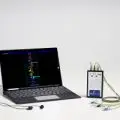
Neurofeedback Brain Training has come a long way.
It began in the late 1950s and early ’60s through the work of both Dr Joe Kamiya at the University of Chicago and Dr Barry Sterman at UCLA. Dr Sterman’s work with NASA trained their lunar astronauts to control their brain’s sensorimotor rhythm (SMR). Fifty years later, neurofeedback is still part of the astronaut training programme.
Neurofeedback teaches self-regulation of brain function. At Brain Training Australia™ we take a non-medical (non-linear) approach to Brain Training. There are different types of Neurofeedback systems available on the market today, mainly linear and non-linear and so the existing research extends to both.
Addiction
A Family Matter: NeurOptimal® For Fetal Alcohol Syndrome
FAS has a profound impact on both the child and the family. In this pilot study, NeurOptimal® was provided for both child & family members. Standard measures and FMRI were used to assess results.
Dr. Linda Beckett MD
Dr. Janet McCulloch MD
Founders of the Kingston Institute of Psychotherapy & Neurofeedback
In Kingston, Ontario, Canada
Attention Deficit Hyperactivity Disorder (ADHD)
University of Central Florida research studies: NO and ADHD in college students NO and Anxiety in college students
Presented by Gulnora Hundley, PhD, LMHC, LMFT & Caitlyn Bennett, PhD, LMHC at the 2018 NeurOptimal® Conference: Transforming Lives!
Anxiety
-
Cannon, R. (2012). LORETA neurofeedback: odd reports, observations, and findings associated with spatial specific neurofeedback training. Journal of Neurotherapy, 16(2), 164-167.
-
Hammond, D. C., Stockdale, S., Hoffman, D., Ayers, M. E., & Nash, J. (2001). Adverse reactions and potential iatrogenic effects in neurofeedback training. Journal of Neurotherapy, 4(4), 57–69.
-
Hammond, D. C., & Kirk, L. (2008). First, do no harm: Adverse effects and the need for practice standards in neurofeedback. Journal of Neurotherapy, 12(1), 79–88.
-
Lubar, J. F., Shabsin, H. S., Natelson, S. E. et al. (1981). EEG operant conditioning in intractable epileptics. Archives of Neurology, 38, 700–704.
-
Lubar, J. F. & Shouse, M. N. (1976). EEG and behavioral changes in a hyperactive child concurrent with training of the sensorimotor rhythm (SMR): A preliminary report. Biofeedback & Self-Regulation, 1(3), 293–306.
-
Lubar, J. F., & Shouse, M. N. (1977). Use of biofeedback in the treatment of seizure disorders and hyperactivity. Advances in Clinical Child Psychology, 1, 204–251.
-
Matthews, T. V. (2007). Neurofeedback overtraining and the vulnerable patient. Journal of Neurotherapy, 11(3), 63–66
-
Ochs, L. (2007). Comment on “neurofeedback overtraining and the vulnerable patient. Journal of Neurotherapy, 11(3), 67–71.
-
Rogel, A., Guez, J., Getter, N., Keha, E., Cohen, T., Amor, T., Todder, D. (2015).Transient adverse side effects during neurofeedback training: a randomized, sham-controlled, double blind study. Applied Psychophysiology & Biofeedback, (40)3, 209-218. doi: 10.1007/s10484-015-9289-6
-
Todder, D., Levine, J., Dwolatzky, T., & Kaplan, Z. (2010). Case report: impaired memory and disorientation induced by delta band down-training over the temporal brain regions by neurofeedback treatment. Journal of Neurotherapy, 14(2), 153–155.
-
Whitsett, S. F., Lubar, J. F., Holder, G. S., & Natelson, S. (1982). A double-blind investigation of the relationship between seizure activity and the sleep EEG following EEG biofeedback training. Biofeedback & Self-Regulation, 7, 193–209.








